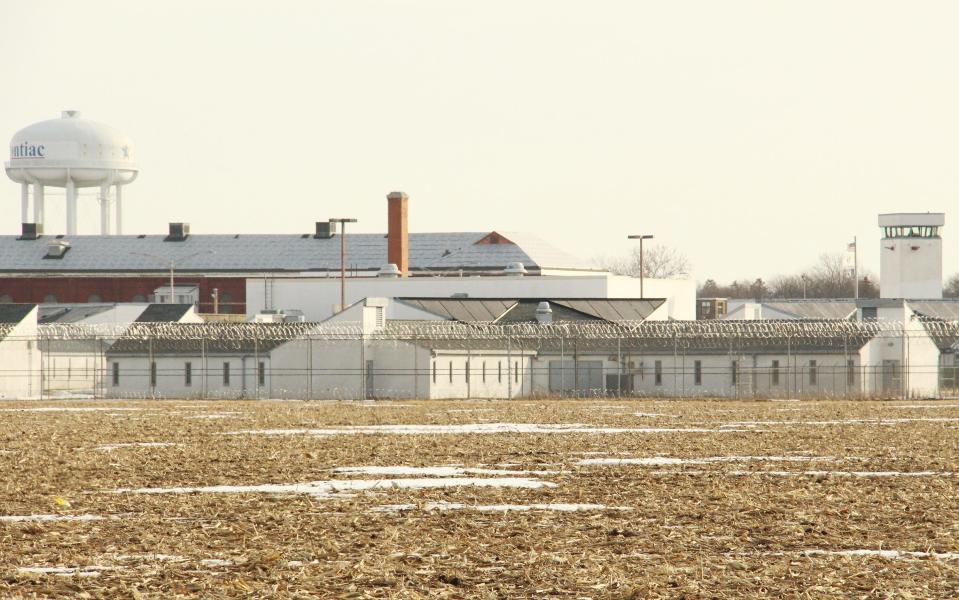Will a history of violence at Pontiac Correctional Center continue at Lawrence?

Recent plans by the Illinois Department of Corrections have raised questions about the future of Pontiac Correctional Center. The medium security unit is scheduled to be fully shut down by next Wednesday with the remaining MSU inmates being housed at the north end of the North-South Cellhouse.
The East-West Cellhouse is scheduled to be shuttered by sometime this spring or summer.
It is all part of a facility consolidation/conversion plan developed in February to help with the large amount of overtime hours correctional officers are collecting at the Pontiac and Vandalia facilities. The idea is move inmates to other locations whether in these facilities or to other correctional centers.

The first group of inmates removed regarding this plan took place on Feb. 9. Approximately 170 MSU (medium security unit) inmates were loaded up on buses and taken to Centralia Correctional Center, with some having to be moved to Pinckneyville.
Like correctional officers at PCC, staff at Centralia was also caught unprepared because of short notice provided of the move.
There are also other factors for this action, including deteriorating buildings, such as the East-West Cellhouse at Pontiac. Projected cost to repair the cell house is $3,871,931.
Before the transferring began, there were 329 inmates housed at MSU and 339 housed in the East-West Cellhouse. After all is said and done, there is the expectation of having 642 inmates — from maximum security to medium security — in the North-South Cellhouse.
The Mental Health Units are also slated to remain.
As for staffing, the plan calls for no jobs to be lost. IDOC Director Rob Jeffreys later said that there is the possibility that hiring more is a possibility. The plan showed 451 correctional officers, 68 sergeants and 50 lieutenants on staff.
A number of administrative detention and other maximum-security inmates have been transferred to Lawrence Correctional Center at Sumner, which has raised the issue of safety at that facility.
William Lee, president of AFSCME Local 494 at Pontiac, feels the Lawrence facility is not properly prepared to house such violent inmates. But Jeremy Givens of AFSCME Local 3600 at Lawrence said that Lawrence has had AD inmates for years and that “the max transfers that we have received thus far have been nothing but complimentary of the facility.”
He pointed out that “Lawrence lacks two major components, one being staff and the other operations.”
The hope is that there are no incidents that take place, but as those who have lived in the Pontiac area and/or worked at PCC, know that things happen when a large group of inmates are bent on violence.
There have been at least six inmates at Pontiac who have died in confrontations with guards in the 151-year history of the Pontiac Correctional Center.
The first “riot” took place on Sept. 17, 1919, when three inmates tried to shoot their way out on a prison break. One guard was killed while two of the inmates were shot and killed.
There was an escape attempt on Aug. 18, 1943, during a baseball game. Two inmates died from gunshot wounds.

June 23, 1954, was a day when another inmates died after being shot during a two-hour disturbance in the West Cellhouse. This was caused by approximately 450 inmates.
In 1996, an inmate was killed by correctional officers after attacking a guard. The inmates, said to be a high-ranking gang leader, was the last inmate to die from a confrontation with guards. The prison was put on 23-hour lockdown and remained that way for years.
Former Daily Leader staff reporter Sheila Shelton wrote in a story that Odie Washington, the DOC director in 1996, “told news media on a tour of PCC that the change in mission at Pontiac would make the prison an all-disciplinary-segregation-unit, maximum-security facility.
“DOC officials said then that this scenario translated into 'the worst of the worst' inmates.”
There were other cases where PCC staff members were killed by inmates. The bloodiest and most well-known was the July 22, 1978, riot that resulted in the death of Lt. William Thomas and correctional officers Robert Conkle and Stanley Cole.
On Feb. 8, 1983, Frieda King, who was a food supervisor, was murdered by inmate Anthony Hall. On Sept. 3, 1987, Superintendent Robert Taylor was murdered in his office on the fifth gallery at the South Cellhouse. This was one day after other incidents of violence had taken place at PCC. Taylor was the liaison between inmates and PCC administration.
In 1985, former Assistant Warden Virdeen Willis Jr. was murdered in Chicago, though he hadn't been assigned to PCC for two years, according to Shelton's story.
In another story written by Shelton in 2009, this killing was in retaliation of for the death of an inmate earlier that summer. The inmate died after choking to death on a plastic bag containing cocaine.
Lawrence is a facility that is moving from high-medium security to maximum security rather quickly. Givens remarked that the “state has indicated several times it wants Lawrence to be the model not only for the state but the country as a whole. As president of the local all I can say is we need a dream team built for that to occur.
“Our members stand ready and willing to conquer any task before them once provided such direction.”
This article originally appeared on Pontiac Daily Leader: Will a history of violence at PCC continue at Lawrence?

 money
money 